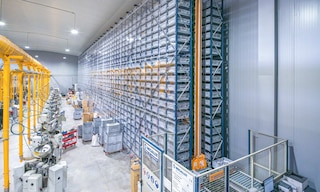
Production plan and how to prepare it
A production plan is essential for manufacturing companies and service providers. It outlines everything they need to carry out their operational processes.
What is a production plan?
A production plan consists of a guide for designing and creating a product or service. Preparing it in advance helps make businesses more efficient: it allocates the resources, time and tasks needed to meet objectives. It also aims to anticipate demand and optimise the use of raw materials, labour and machinery to achieve ideal production levels.
A company’s operations plan covers the technical and organisational aspects related to its performance and manufacturing processes. It should detail how industrial processes should be carried out; what material, human and technical resources need to be mobilised; and the timelines for these activities.
Production planning process
The person responsible for production organises and supervises everything related to the production plan, which generally involves these steps:
- Forecast demand. Estimate how many products your current or future customers will order to ensure the business can meet their needs. Forecasts leverage historical data and emerging trends to predict consumer behaviour and decisions.
- Weigh production options. Account for available resources and see how to use them most effectively based on demand forecasts.
- Choose efficiency. Select the most cost-effective and time-efficient alternatives.
- Monitor and assess. As production progresses, check whether targets are being met and account for any deviations.
- Adjust the plan. Once manufacturing or service deployment has finished, you might have to modify the production plan to improve it and meet customer expectations.

What do you need to create a production plan?
Every business requires certain elements to develop an effective production plan. To make sure everything fits together, these pieces must be interconnected:
- Strategy. Decide whether to use a make-to-stock or make-to-order model. In other words, will you produce based on forecast demand or orders received? Likewise, define aspects such as whether production will run 24/7 or stop, for instance, on weekends.
- Schedule. Detail the dates on which each activity will be carried out.
- Materials. You’ll need to ensure the availability of inventory and the resources required to manufacture each product, usually contained in the bill of materials (BOM). This is the step that occurs before procurement.
- Quality control. Implement tests, inspections and checks to guarantee compliance with quality standards.
- Continuous improvement. Identify inefficiencies and potential bottlenecks to correct them, increase productivity and reduce costs.
How do you prepare a production plan?
Before starting, determine whether there are any restrictions in the manufacturing process. You’ll also need information on the production lines and rates for each item. The production rates refer to the quantity of product your company can produce in an hour. Equipped with this data, you can now devise your production plan. You can draw it up using spreadsheets, although larger enterprises often use specialised production planning software.
The master production schedule shows what your organisation will produce, when and in what quantities. Therefore, it’s critical to break down each action to be performed into subtasks, anticipate interrelations between them and assign them the resources necessary to complete them successfully:
- Workflow diagram. Preparing a graphic overview of project phases can help detect overlap and anticipate possible obstacles.
- Task breakdown. Each task should have a manager, a start and end date, an hourly cost (if done internally) or monetary cost (if outsourced), and links with other activities.
- Project calendar. Once tasks are assigned to available resources and their durations are defined, they should all be reflected in the calendar, including the subtasks.

Benefits of an effective production plan
Production plans offer multiple advantages. For example, they enable companies to improve material sourcing through strengthened supplier relationships and to meet schedules and demand on time. This planning also makes it possible to bring costs down to their ideal level — without compromising quality — and to minimise the waste of resources.
Connect your warehouse and production with Mecalux
Guaranteeing inventory availability is fundamental in any production process. It’s also vital to make sure you have enough locations to store your goods once you’ve manufactured them. This is why production planning is so closely linked to intralogistics and warehousing.
If you’re looking to gain complete stock visibility and optimally coordinate production with warehousing, at Mecalux, we can help. We’re experts in storage solutions that give companies total control over their operations. Our Easy WMS warehouse management system ensures that production lines are always supplied and outputs are correctly identified and slotted. Be sure to contact us. We’ll find the solution that matches your company’s needs.
